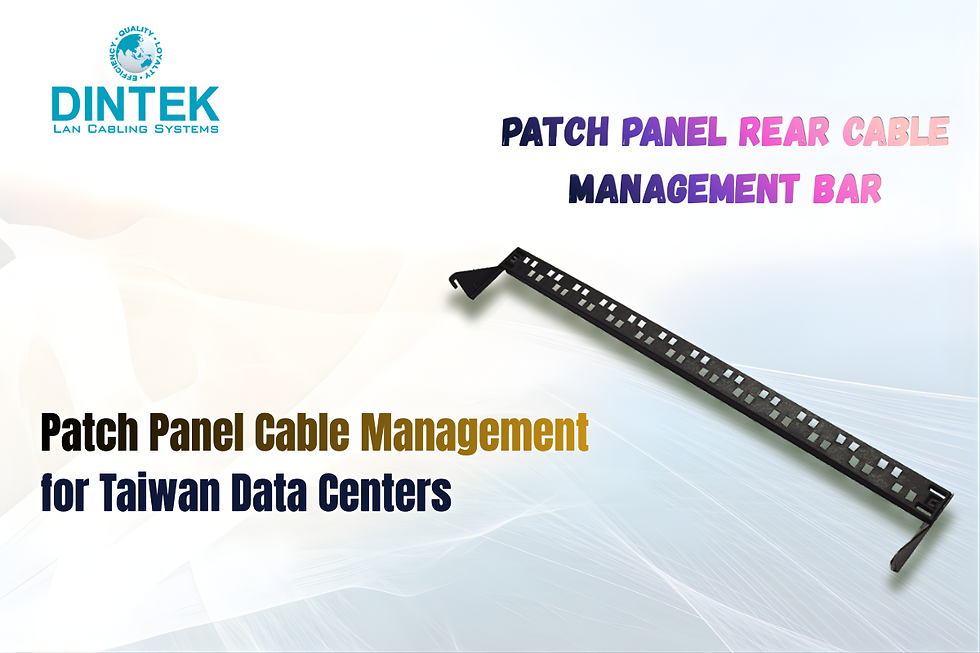What are the advantages of single-mode fiber over multi-mode fiber?
- dinteklancabling
- Apr 19, 2024
- 3 min read
Fibre optic cables serve as the backbone of today's complex communication networks, allowing for the rapid and flawless transfer of data across long distances. Among the numerous possibilities available, two main candidates compete for dominance: single-mode fibre and multi-mode fibre. While they provide comparable functions, there are subtle distinctions that impact performance and dependability. This article will look at the benefits of single vs multi-mode fiber and explain why it is typically the favoured choice in a variety of sectors.
Bandwidth and Distance
Communication, in its essence, hinges on the twin pillars of bandwidth and distance. In this dynamic realm, where data travels at the speed of light, the choice of fiber optic cables becomes paramount. Herein lies the narrative of single-mode fiber, a stalwart champion in the quest for greater bandwidth and extended transmission distances.
Single-mode fiber stands as a testament to technological prowess, boasting unparalleled bandwidth capabilities that transcend the limitations of its multi-mode counterpart. Its slender core, akin to a whispering thread of light, guides photons along a singular path, minimizing dispersion and maximizing data rates. This singular mode of propagation, unencumbered by the complexities of multimodal dispersion, allows for the seamless transmission of information over vast distances.

In the sprawling landscape of telecommunications and data centers, where speed and reach are non-negotiable, single-mode fiber emerges as the undisputed victor. Its ability to traverse long hauls without succumbing to signal degradation not only accelerates the pace of communication but also fosters reliability in an interconnected world. From the pulsating arteries of global networks to the intricate neural pathways of cloud infrastructure, single-mode fiber stands as a beacon of efficiency and resilience, illuminating the path towards a future fueled by connectivity without compromise.
Signal Quality and Dispersion
In the symphony of communication, where every note carries the weight of information, signal quality reigns supreme. Herein lies the tale of single-mode fiber, a testament to precision and reliability in the face of signal distortion.
At the heart of single-mode fiber lies its slender core diameter, a marvel of engineering precision that serves as the cornerstone of pristine signal quality. Unlike its multi-mode counterpart, which grapples with the chaotic dance of light rays within a broader core, single-mode fiber orchestrates a symphony of coherence, guiding photons along a singular path with unwavering fidelity.
This precision translates to minimal signal distortion and superior data integrity, transforming single-mode fiber into the conduit of choice for applications demanding unwavering signal fidelity. From the ethereal realms of long-haul communication to the bustling thoroughfares of high-speed internet connections, single-mode fiber stands as a bastion of reliability, ensuring that every bit of information traverses its path unscathed.
In the realm of communication technologies, single-mode fiber reigns supreme as the quintessential multimedia outlet, facilitating the seamless transmission of data, voice, and video across vast distances. Its unparalleled precision and reliability make it the backbone of modern communication networks, supporting the interconnected digital ecosystem upon which the modern world thrives.
Cost and Future-proofing
In the labyrinthine world of fiber optic infrastructure, where every investment is scrutinized for its long-term viability, the discourse surrounding cost and future-proofing takes center stage. Herein lies the narrative of single-mode fiber, a beacon of sustainability and foresight in an ever-evolving landscape.
Dispelling the myth of exorbitant costs associated with single-mode fiber requires a nuanced understanding of investment dynamics. While it's true that the upfront installation expenses may lean towards the side of multi-mode fiber, a deeper dive into the realm of long-term investments reveals a different story. Here, the scalability and future-proofing inherent to single-mode fiber emerge as pivotal factors tipping the scales in its favor.
Single-mode fiber, with its capacity to accommodate higher data rates and seamlessly integrate with emerging technologies, presents itself as a harbinger of cost-effective solutions over the lifespan of the infrastructure. What may seem like a marginal difference in initial costs pales in comparison to the substantial dividends reaped through enhanced scalability and adaptability. In a world where the pace of technological advancement knows no bounds, the ability to future-proof infrastructure against obsolescence becomes an invaluable asset. For expert solutions, contact the DINTEK team today!
Conclusion
In the arena of fiber optic cables, the battle for supremacy rages on, with single-mode fiber emerging as the undisputed champion. Its advantages over multi-mode fiber, including higher bandwidth, longer transmission distances, superior signal quality, and future-proofing, position it as the go-to choice for a myriad of applications. However, the decision between single-mode and multi-mode fiber hinges on the specific requirements of each scenario, necessitating careful consideration. As we navigate the complex terrain of modern communication, let us embrace the unparalleled benefits of single-mode fiber, paving the way for a future marked by connectivity without compromise.



Comments